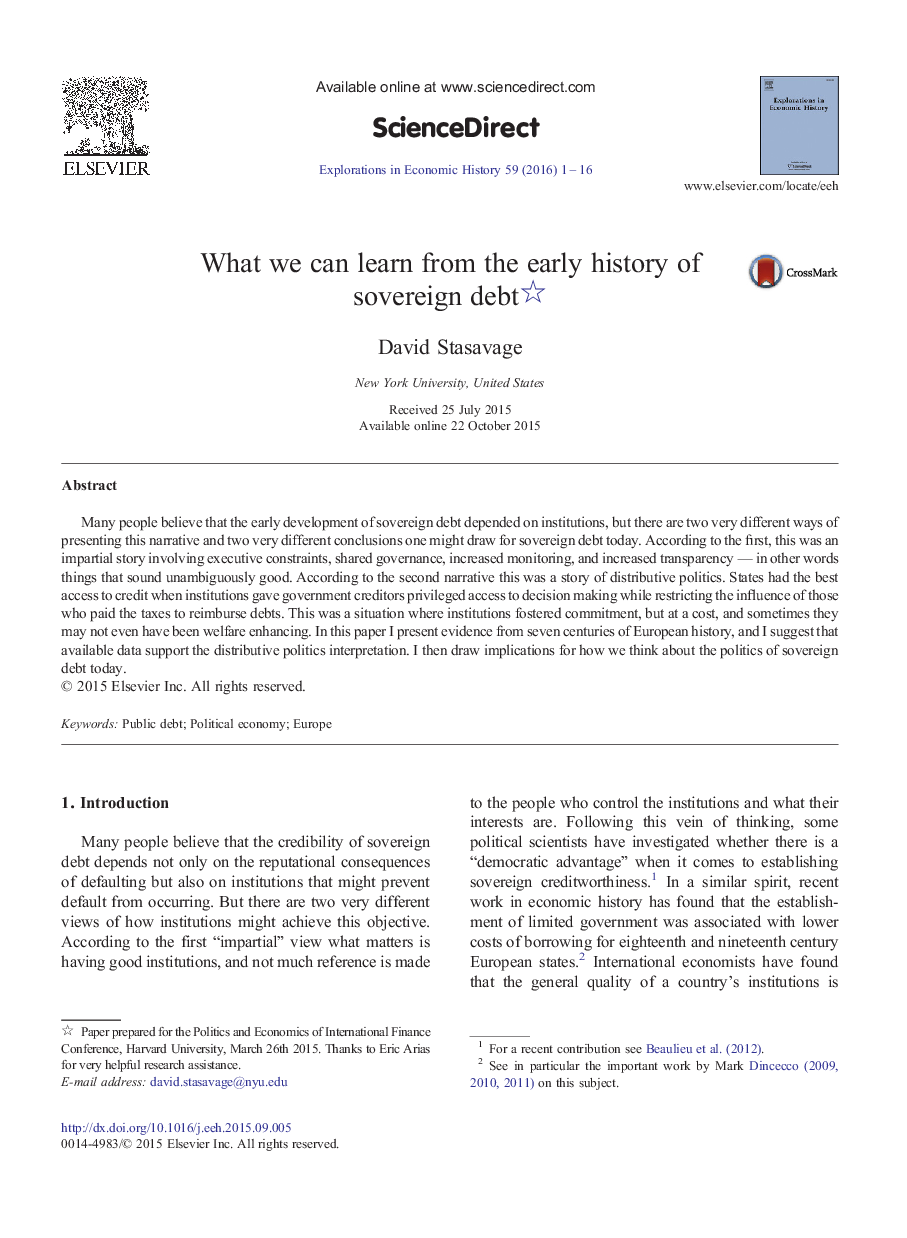| Article ID | Journal | Published Year | Pages | File Type |
|---|---|---|---|---|
| 5068734 | Explorations in Economic History | 2016 | 16 Pages |
Abstract
Many people believe that the early development of sovereign debt depended on institutions, but there are two very different ways of presenting this narrative and two very different conclusions one might draw for sovereign debt today. According to the first, this was an impartial story involving executive constraints, shared governance, increased monitoring, and increased transparency - in other words things that sound unambiguously good. According to the second narrative this was a story of distributive politics. States had the best access to credit when institutions gave government creditors privileged access to decision making while restricting the influence of those who paid the taxes to reimburse debts. This was a situation where institutions fostered commitment, but at a cost, and sometimes they may not even have been welfare enhancing. In this paper I present evidence from seven centuries of European history, and I suggest that available data support the distributive politics interpretation. I then draw implications for how we think about the politics of sovereign debt today.
Keywords
Related Topics
Social Sciences and Humanities
Arts and Humanities
History
Authors
David Stasavage,
